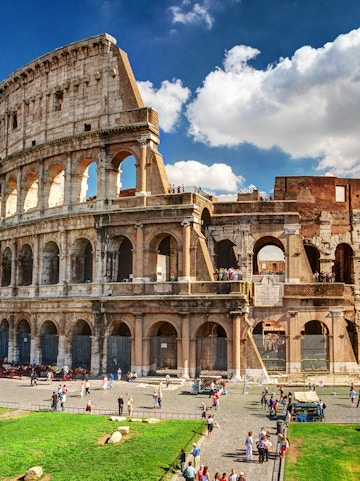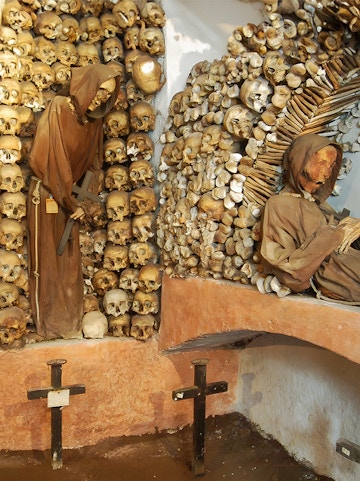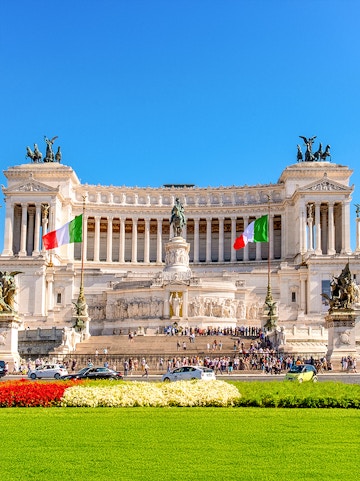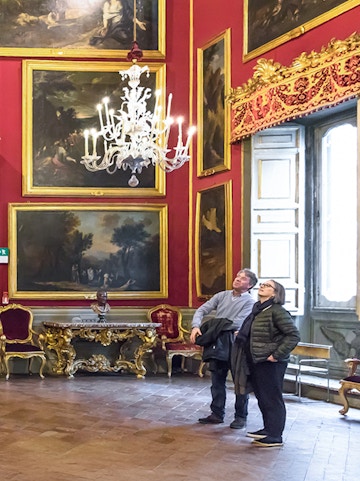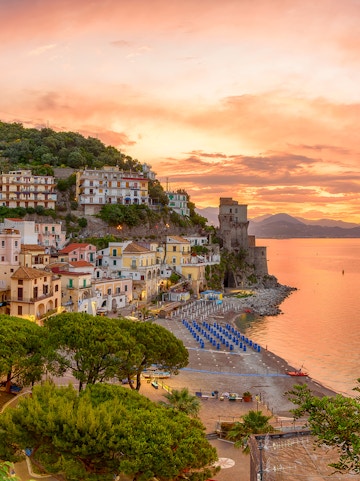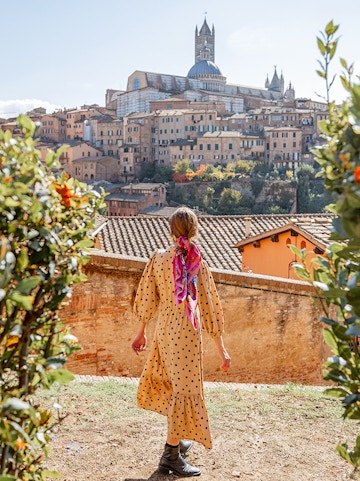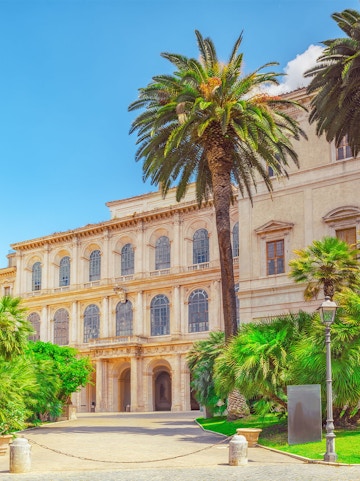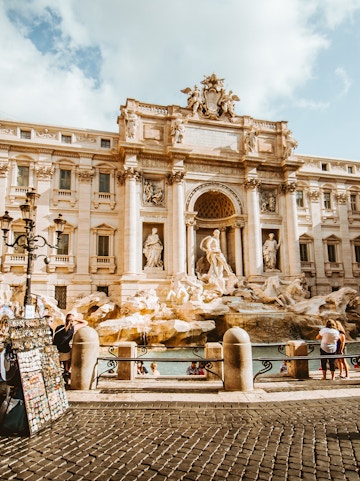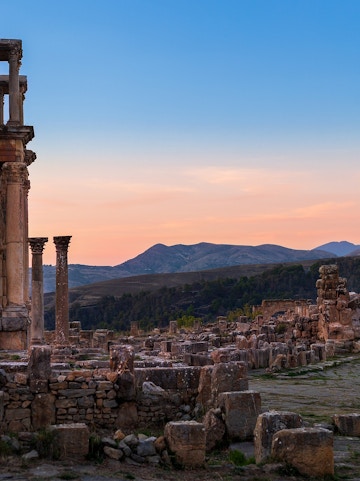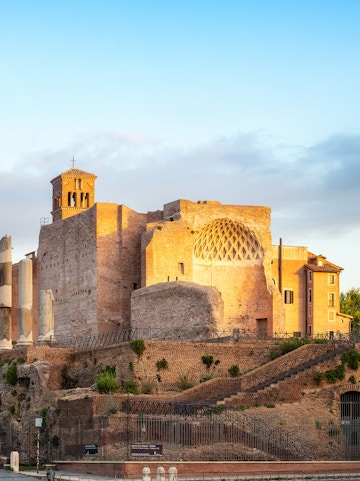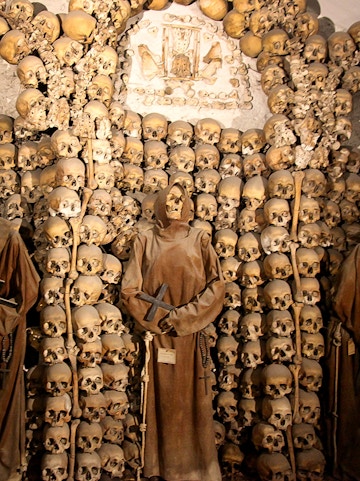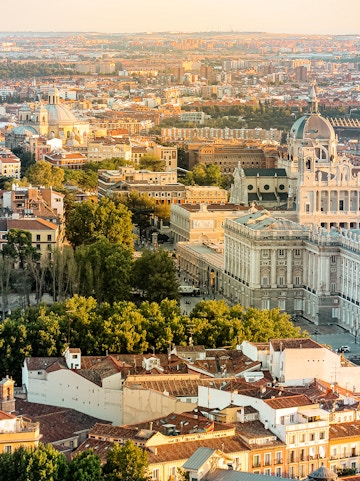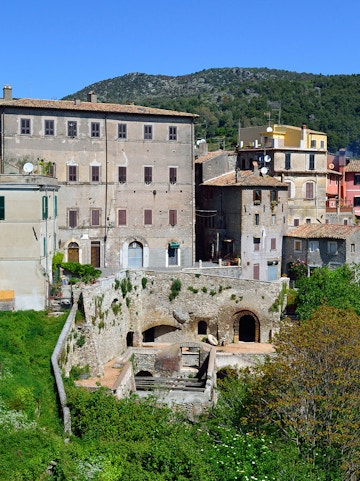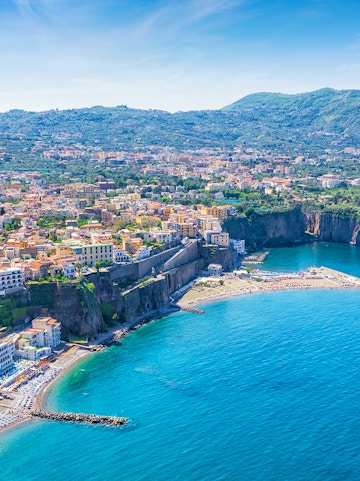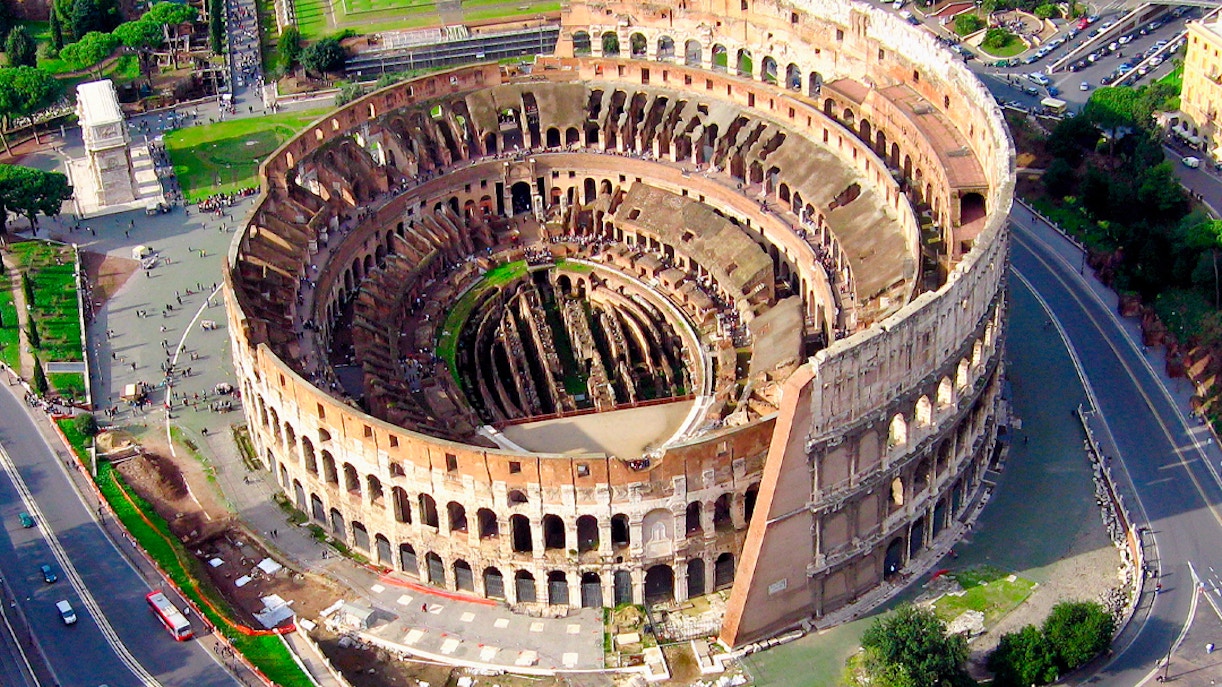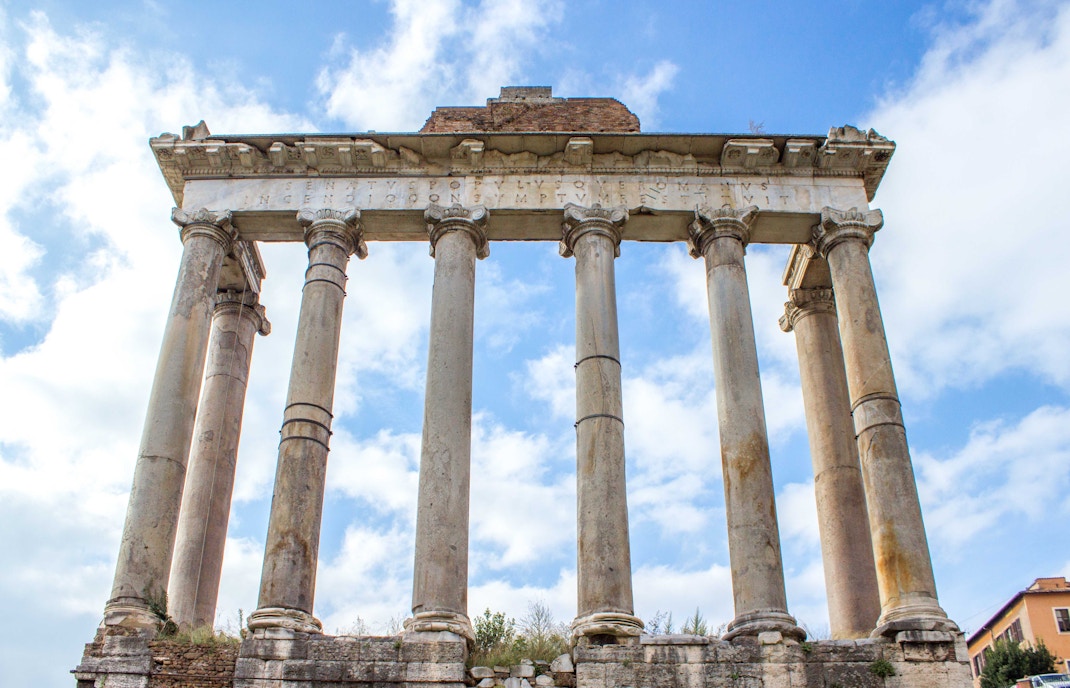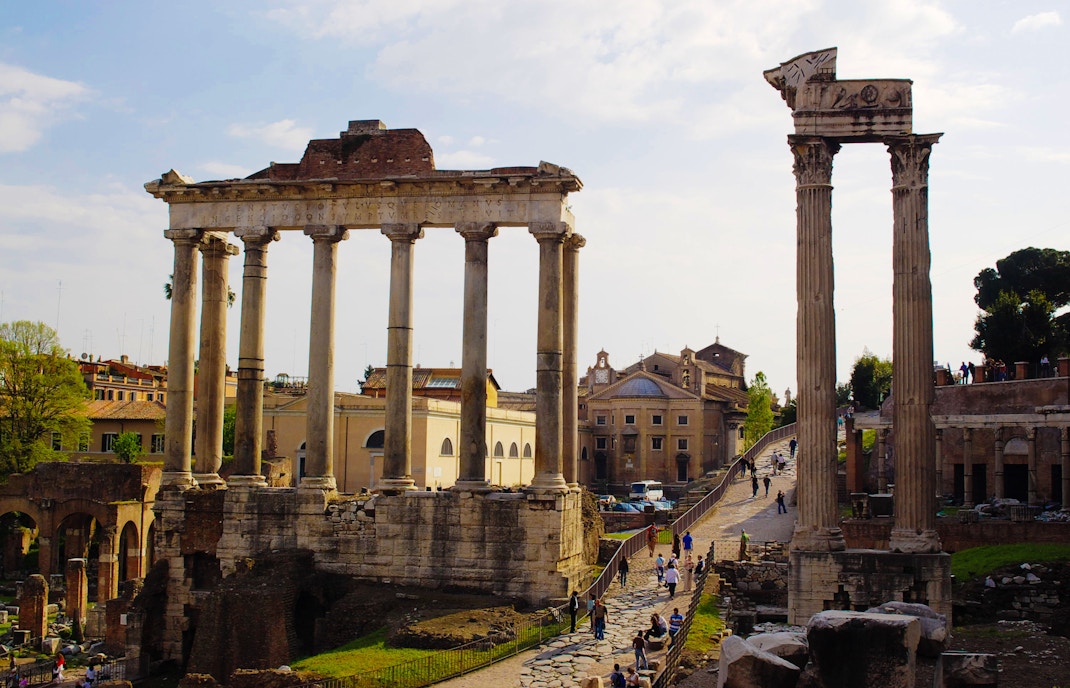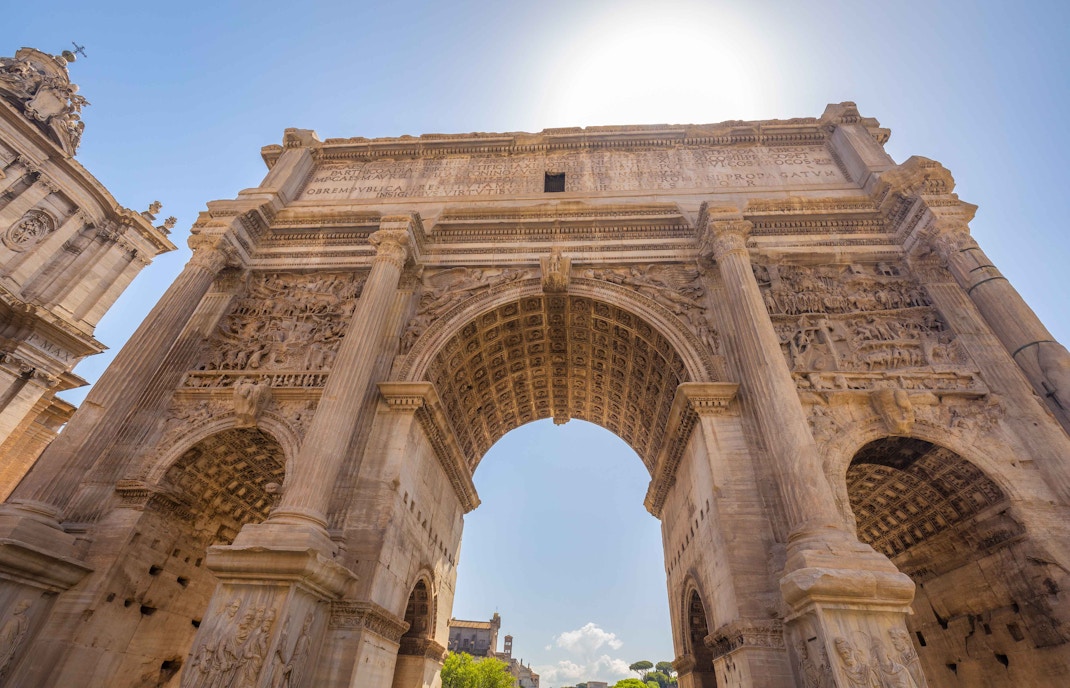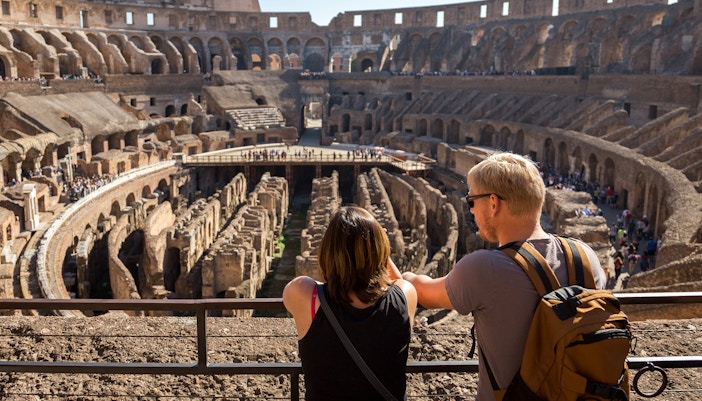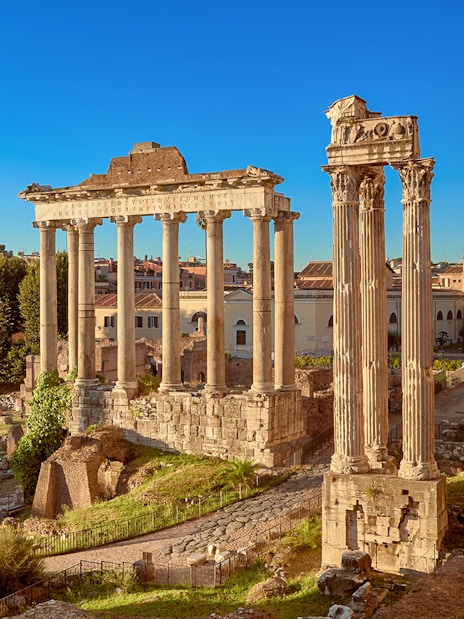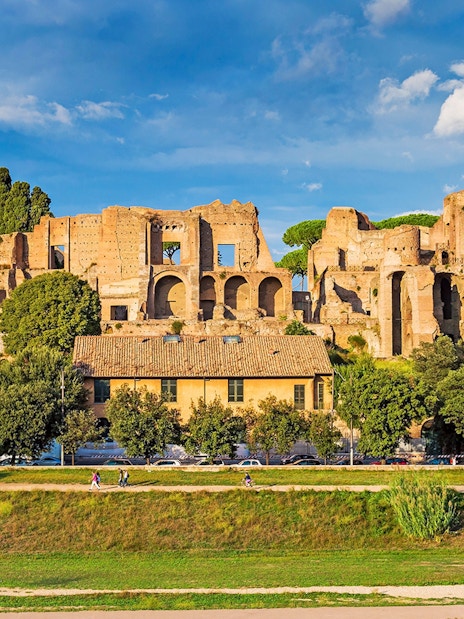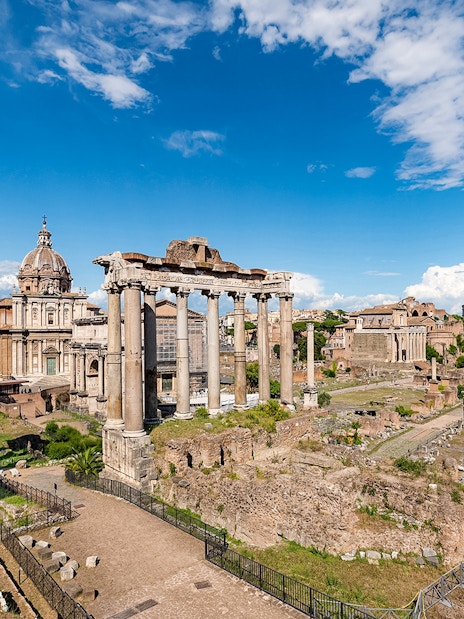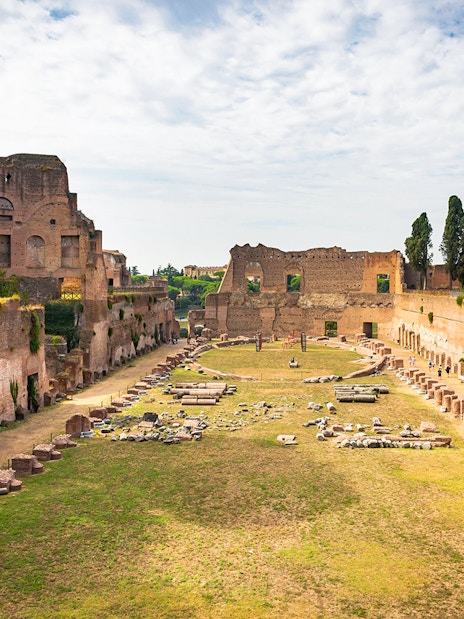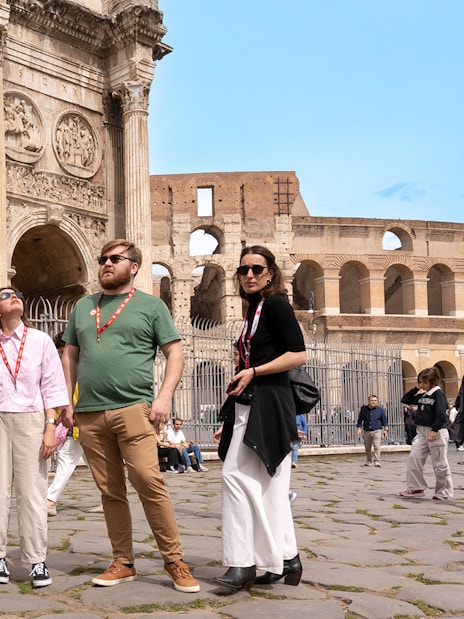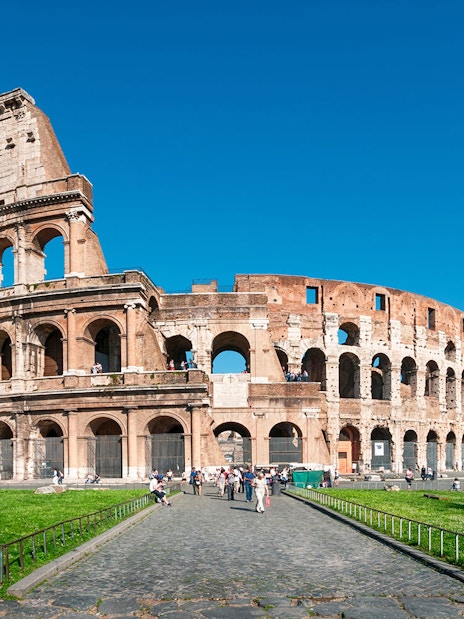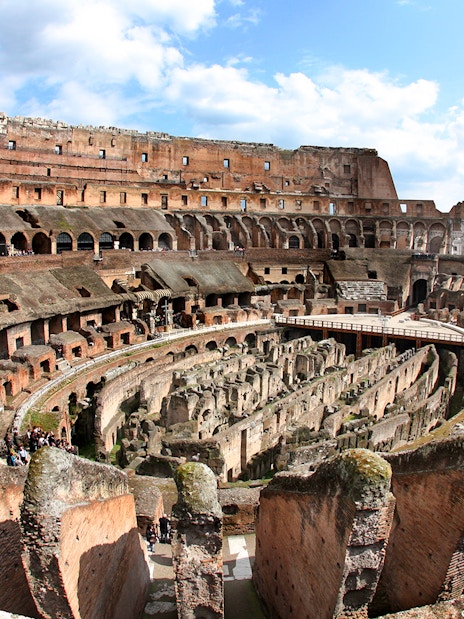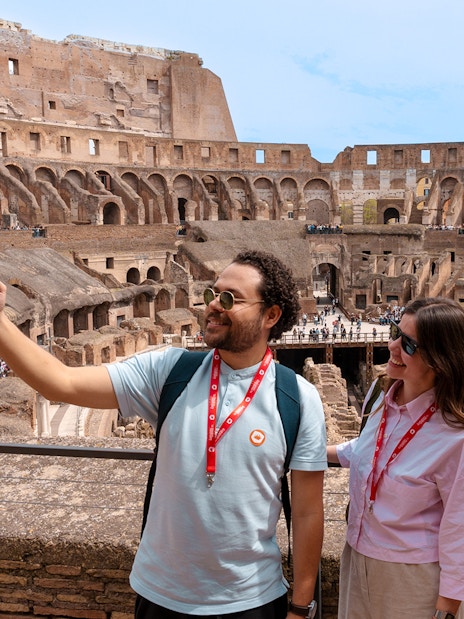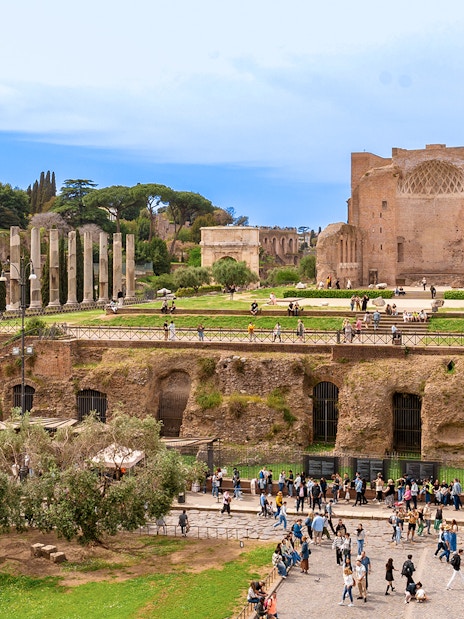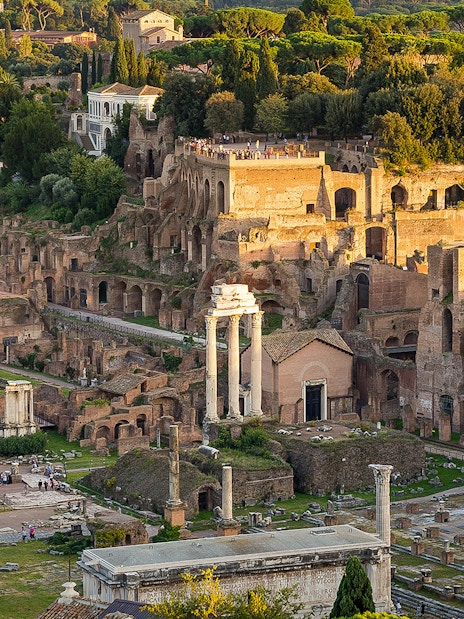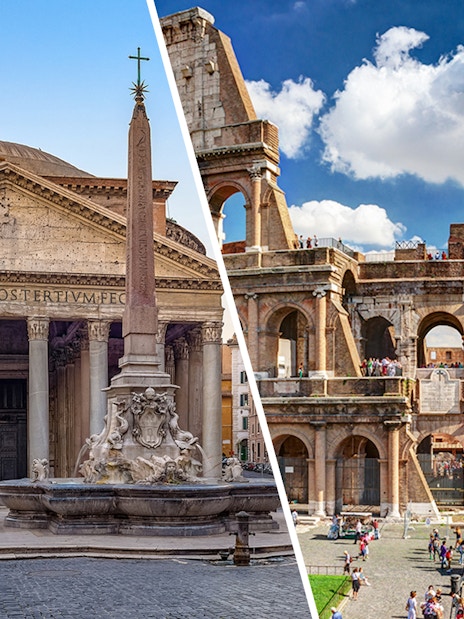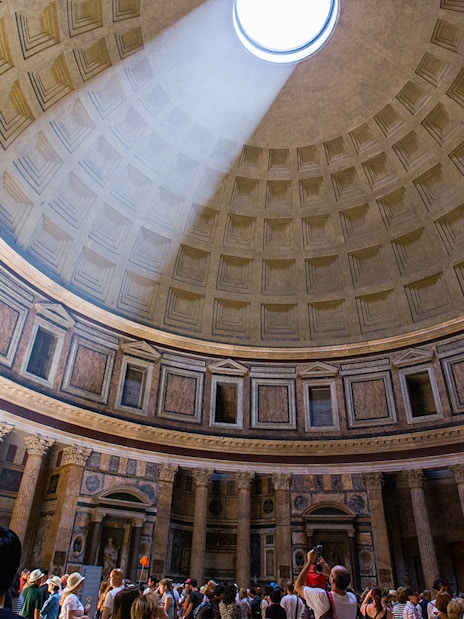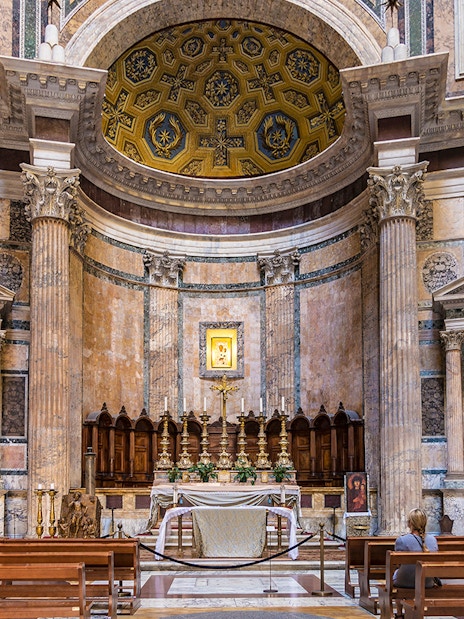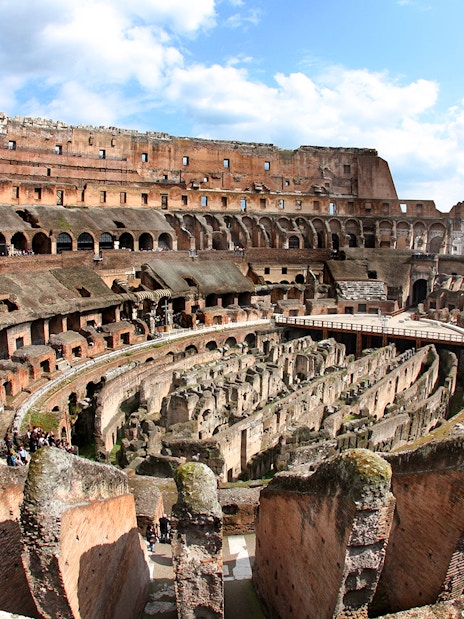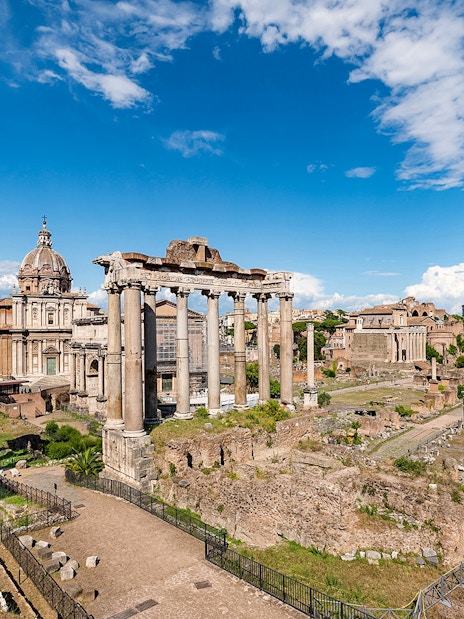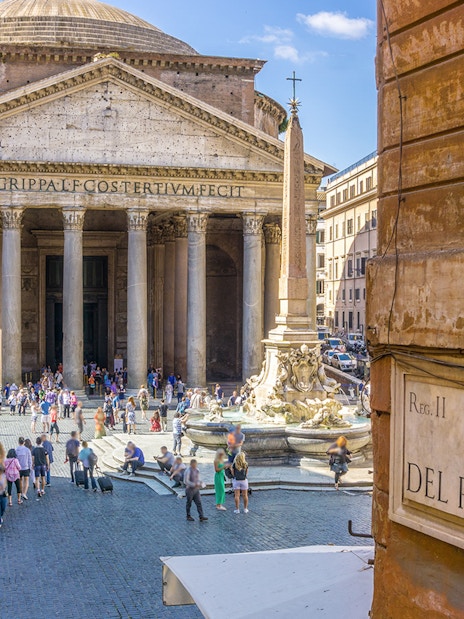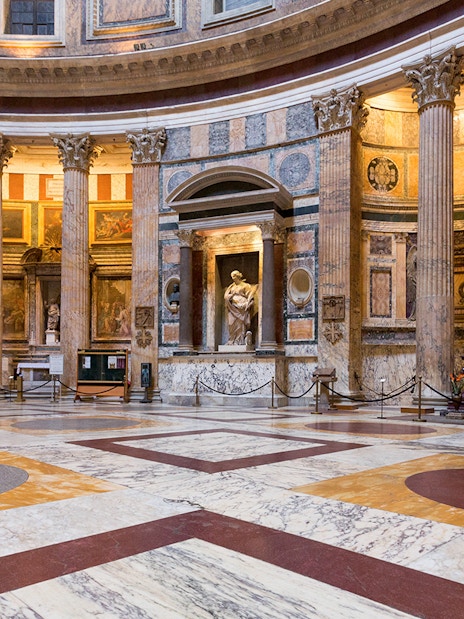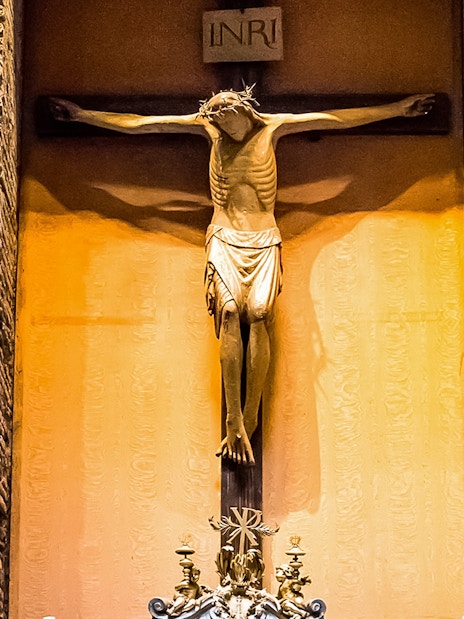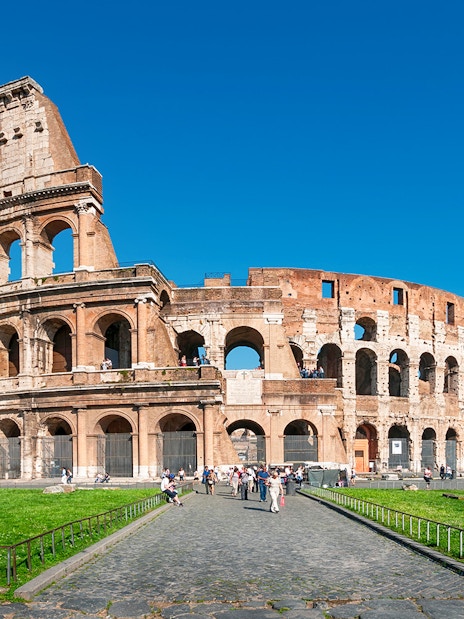Forumul Roman: O scurtă cronologie
📍 Perioada preromană (753-716 î.Hr.) - Începuturi umile
Înainte ca Roma să devină Roma, valea joasă care va deveni Forumul a servit drept casă mlăștinoasă pentru primii coloniști. Proximitatea sa față de Tibru a făcut-o ideală pentru agricultură, apă proaspătă și pentru primele locuințe.
📍 Regatul Roman (625-510 î.Hr.) - Nașterea unui oraș
Romulus, legendarul fondator al Romei, a întemeiat orașul și l-a fortificat cu pereți room walls de-a lungul Dealul Palatin. Forumul a început să prindă contur ca un loc central de întâlnire în cadrul tânărului regat.
📍 Republica Romană (509-27 î.Hr.) - Apariția centrului civic
Forumul a devenit inima politică, juridică și comercială a Republicii. Structuri iconice precum Curia (Casa Senatului), Rostra (tribuna vorbitorilor) și Bazilica Julia au luat formă, însoțind procese, discursuri și piețe.
📍 Imperiul Roman (27 î.Hr.-476 d.Hr.) - Inima unui imperiu
Pe măsură ce împărații ajungeau la putere, Forumul a devenit epicentrul ceremonial și spiritual al Romei. Paradele triumfale, festivalurile religioase și discursurile imperiale l-au transformat într-o scenă grandioasă pentru viața publică.
📍 Perioada medievală (476-14th Century) - Căderea în ruină
După prăbușirea imperiului, Forumul a fost jefuit și neglijat. Cândva scenă pentru marii oratori ai istoriei, a devenit pășune, poreclită Campo Vaccino- Câmpul vacilor.
📍 Renașterea (secolele XIV-XVII) - O scânteie de renaștere
Curiozitatea umanistă a reînviat interesul pentru Roma antică. Ruinele redescoperite au inspirat artiști și arhitecți, iar mai multe structuri ale Forumului au fost reconvertite în biserici, îmbinând tradițiile clasice și creștine.
📍 Epoca săpăturilor (secolele XIX-XX) - Scoaterea la lumină a trecutului
În 1803, arheologul Carlo Fea a început săpăturile oficiale ale Forumului Roman. A urmat peste un secol de săpături, care au dezvăluit încet straturi de istorie romană îngropate sub secole de pământ și resturi.
📍 Astăzi - Istoria live
Acum conservat ca sit arheologic în aer liber, Forumul Roman invită milioane de oameni să se plimbe printre ruinele nucleului politic și spiritual al Romei - o amintire durabilă a moștenirii monumentale a Imperiului Roman.
Istoria îndelungată a Colosseumului




















